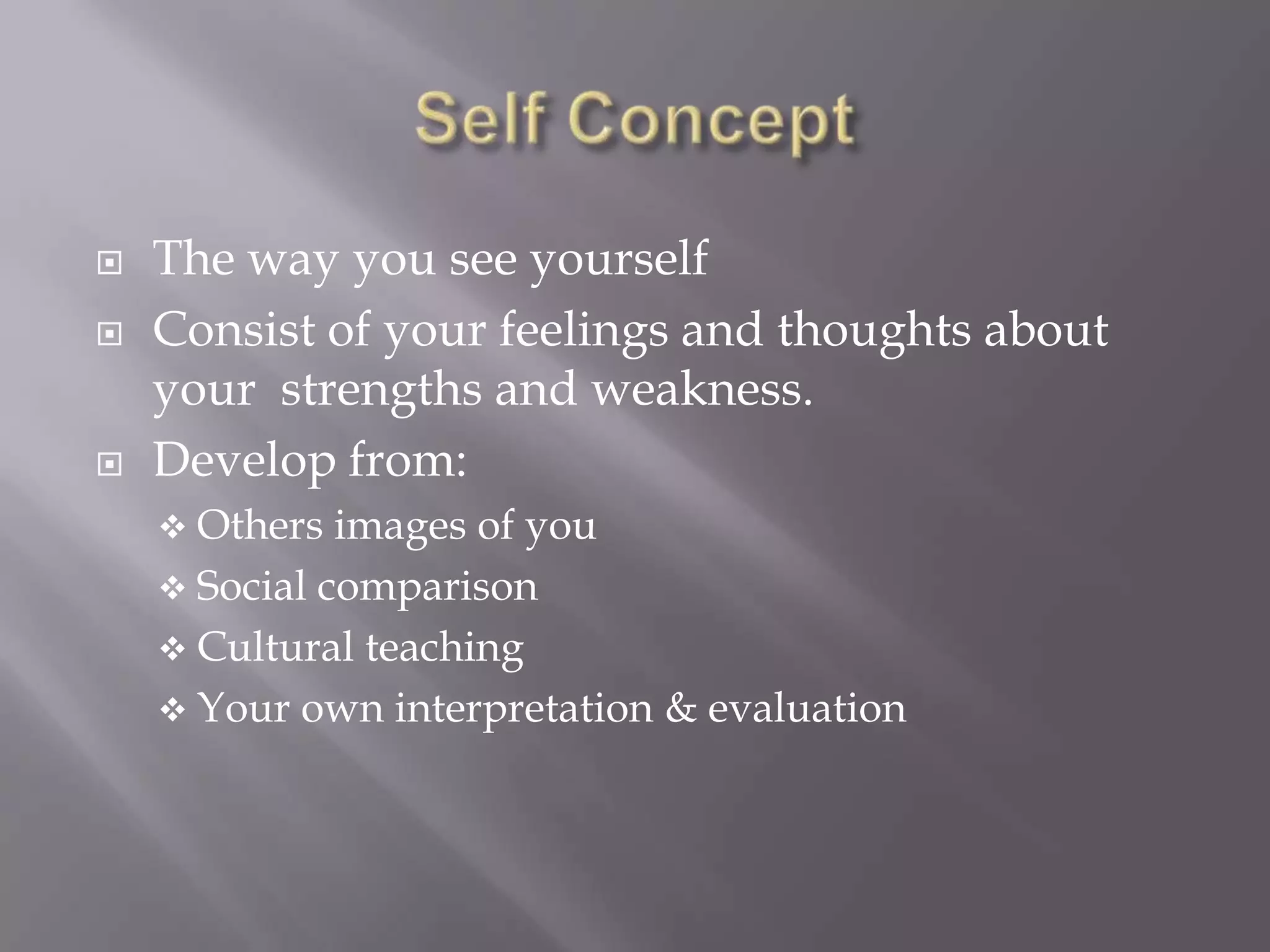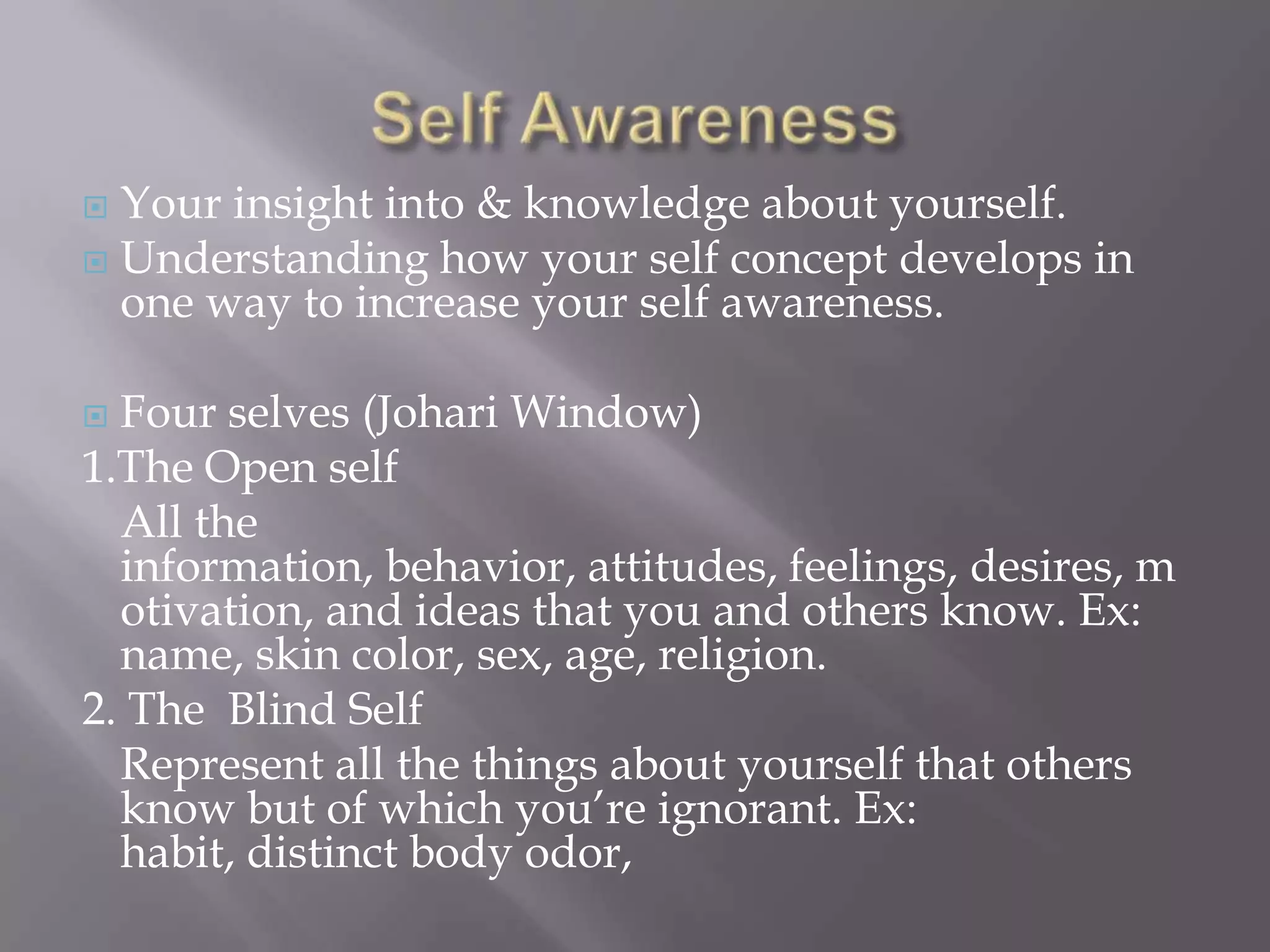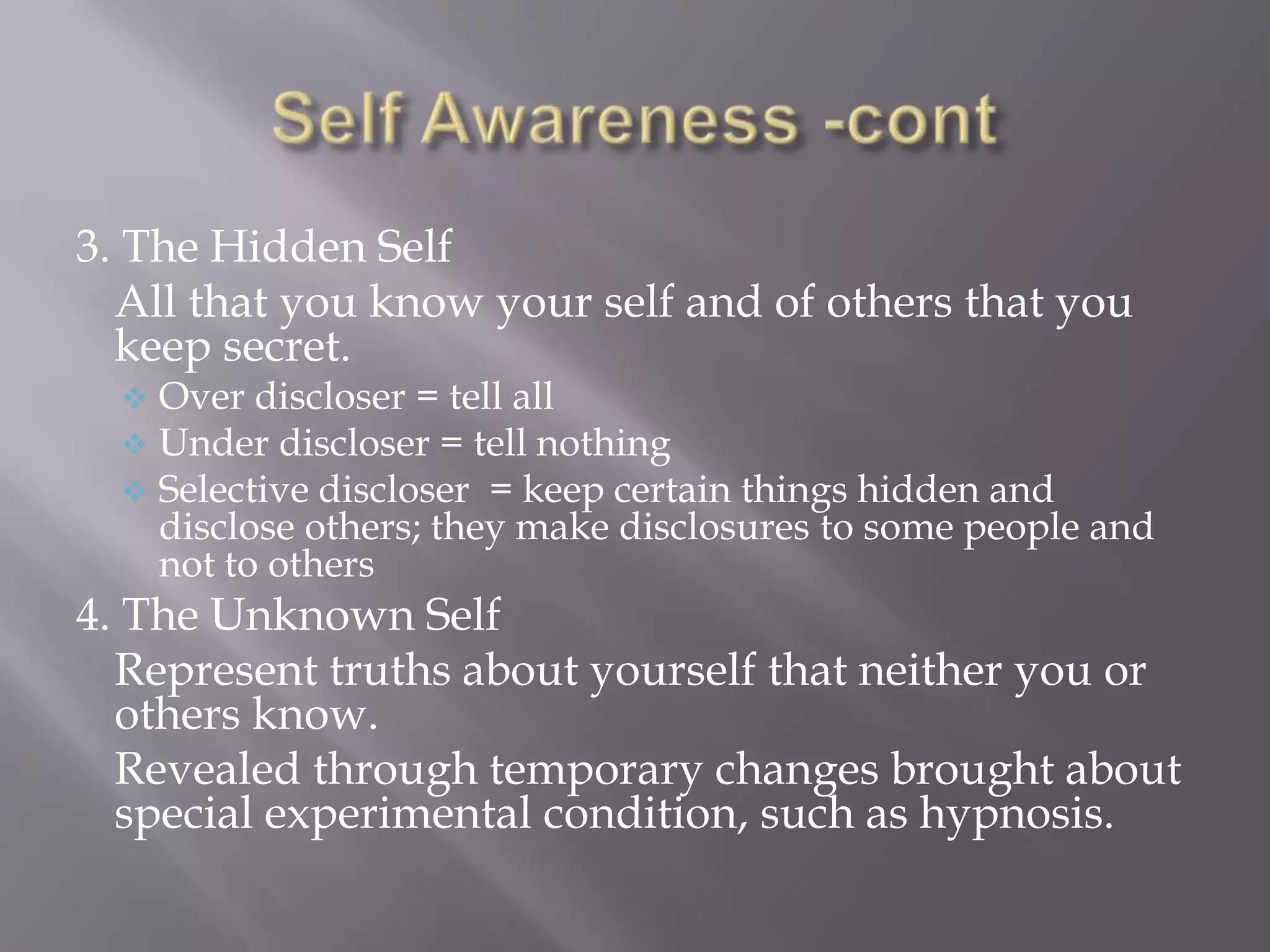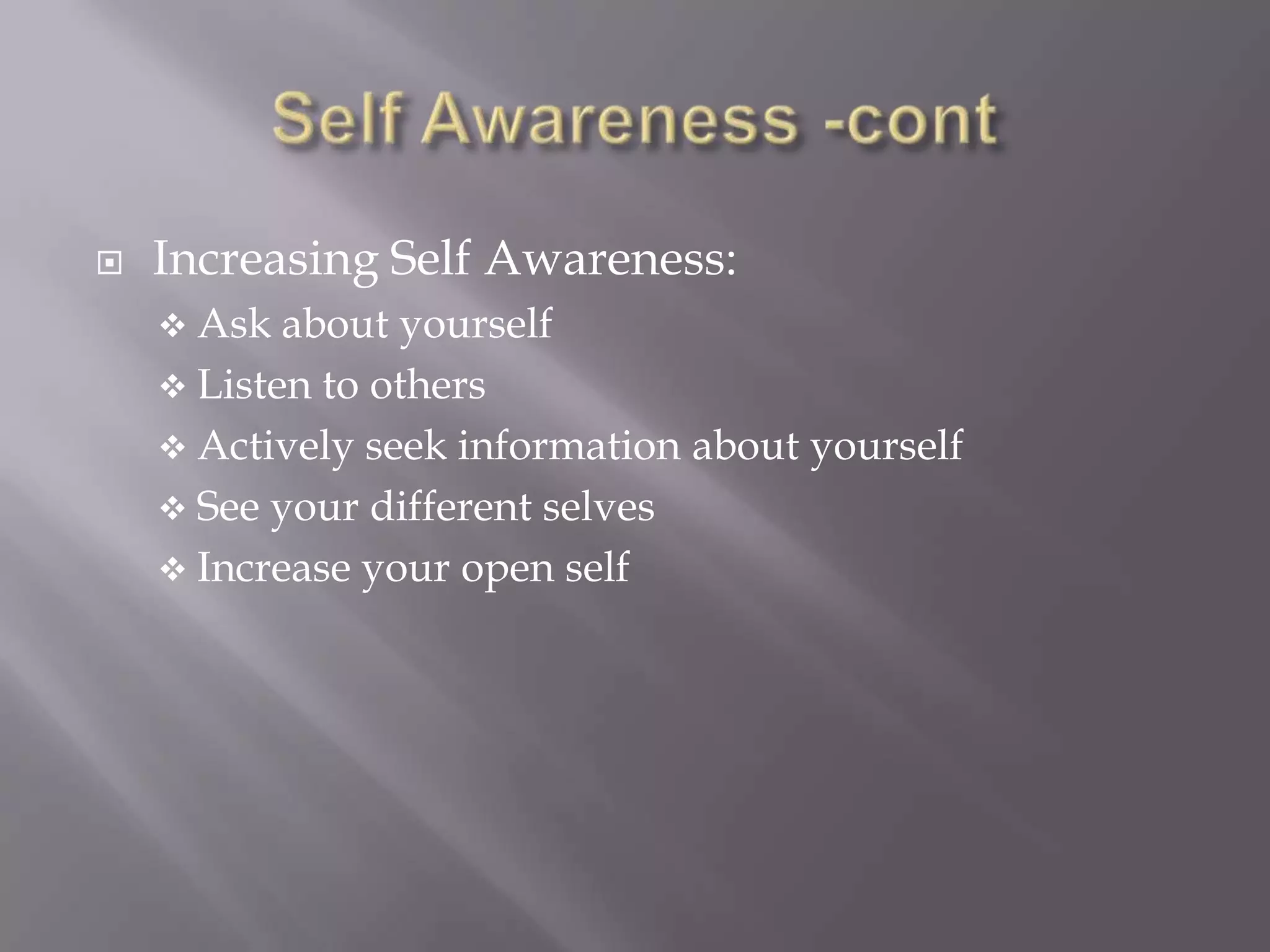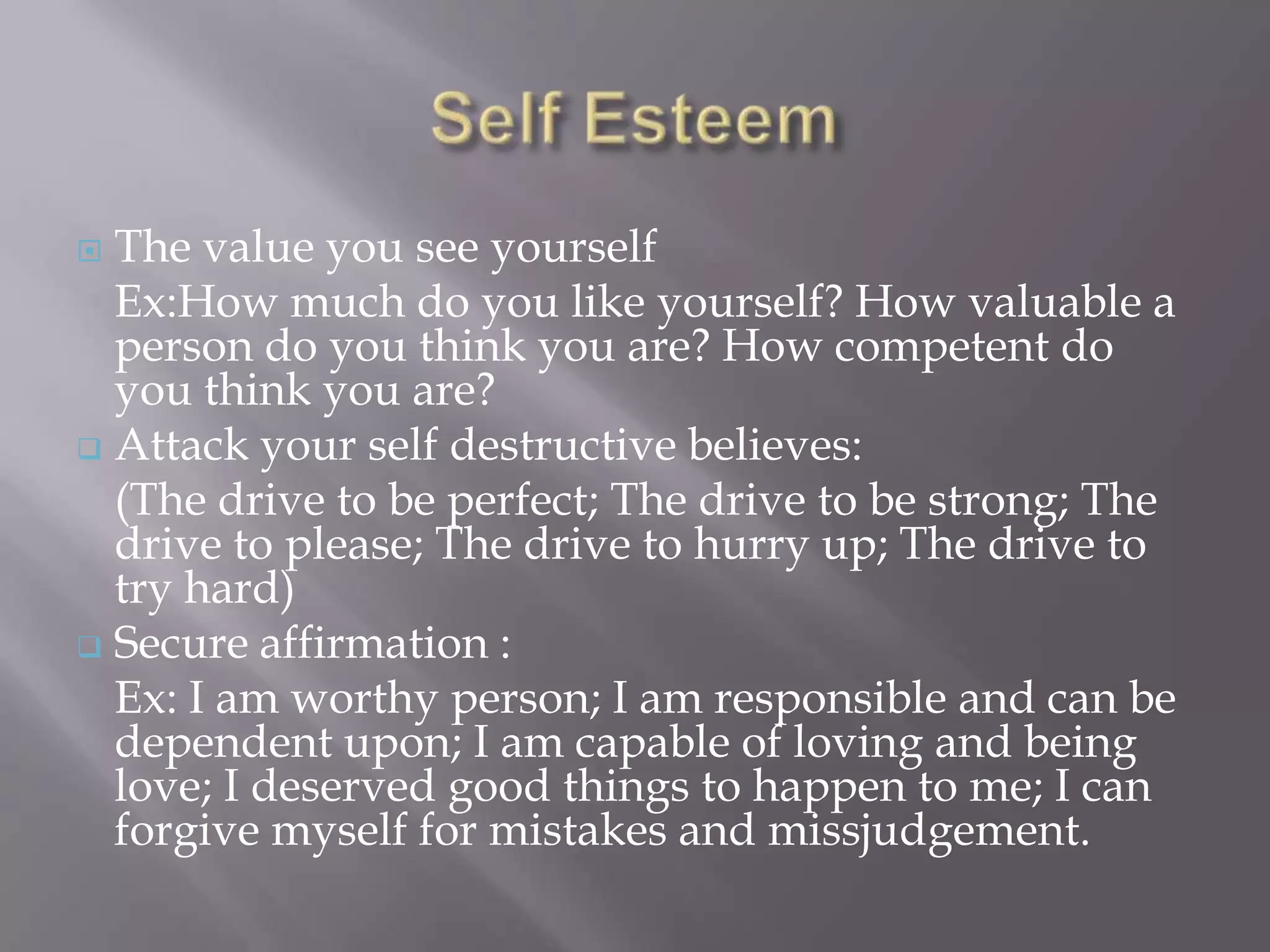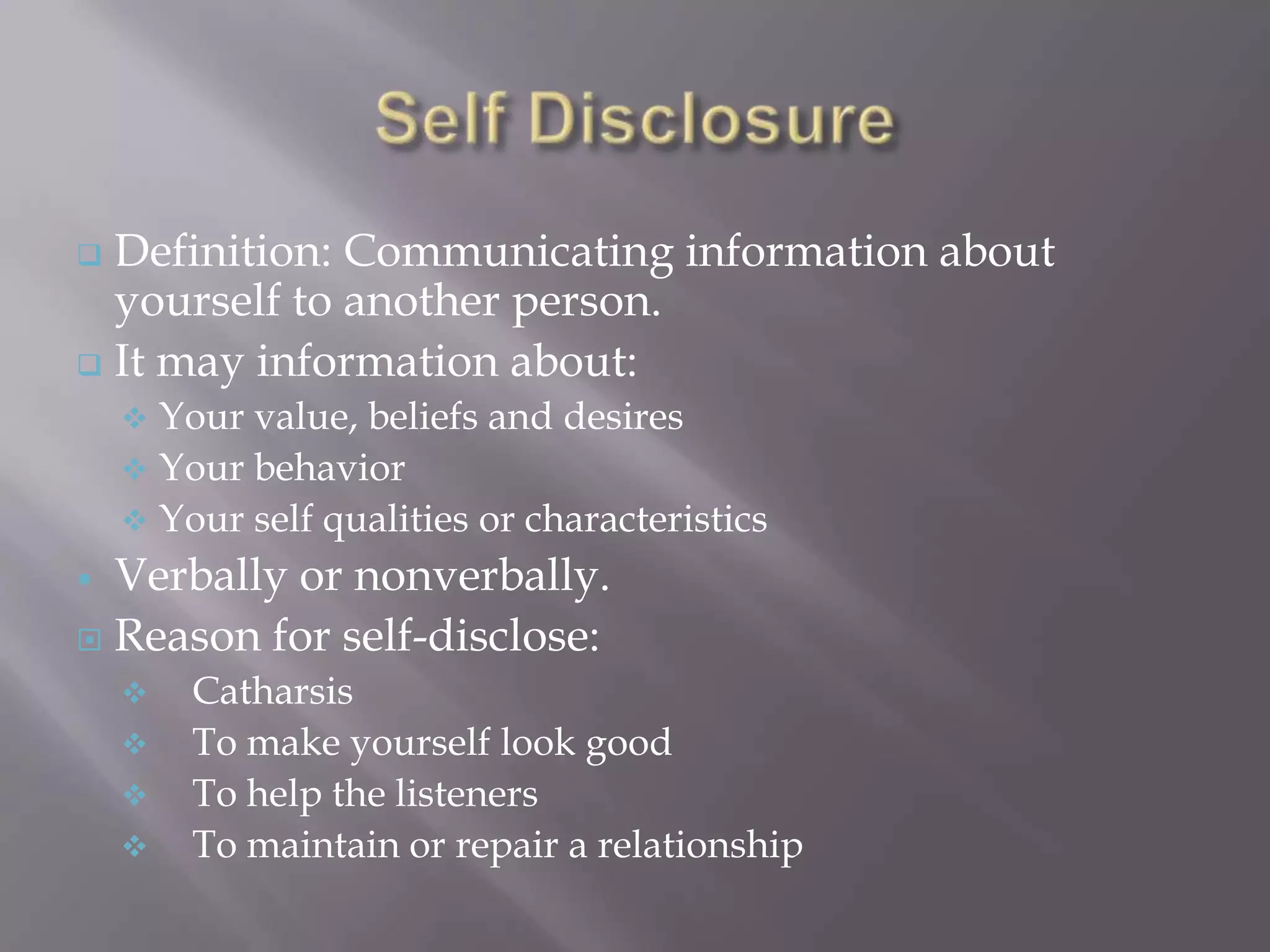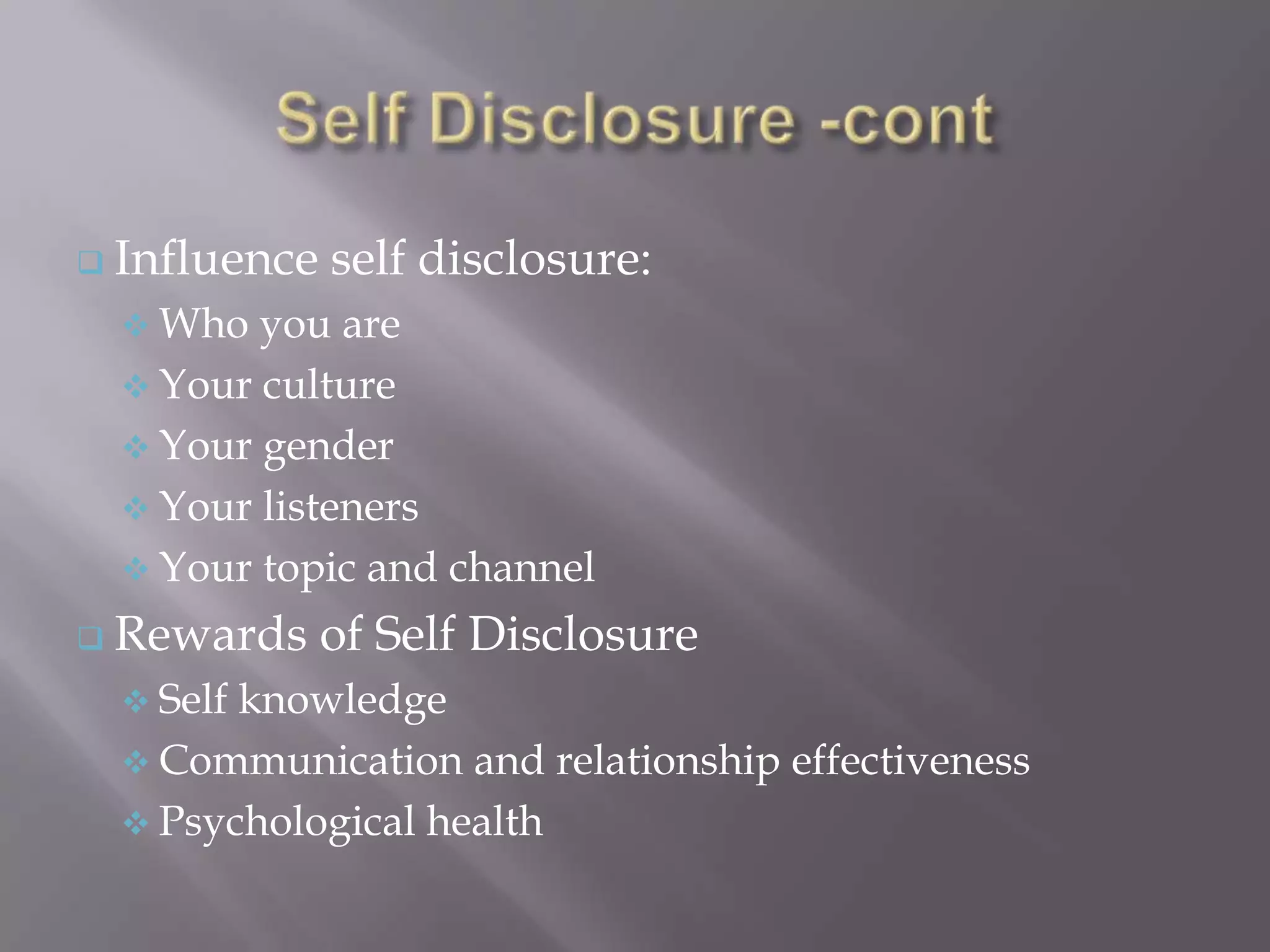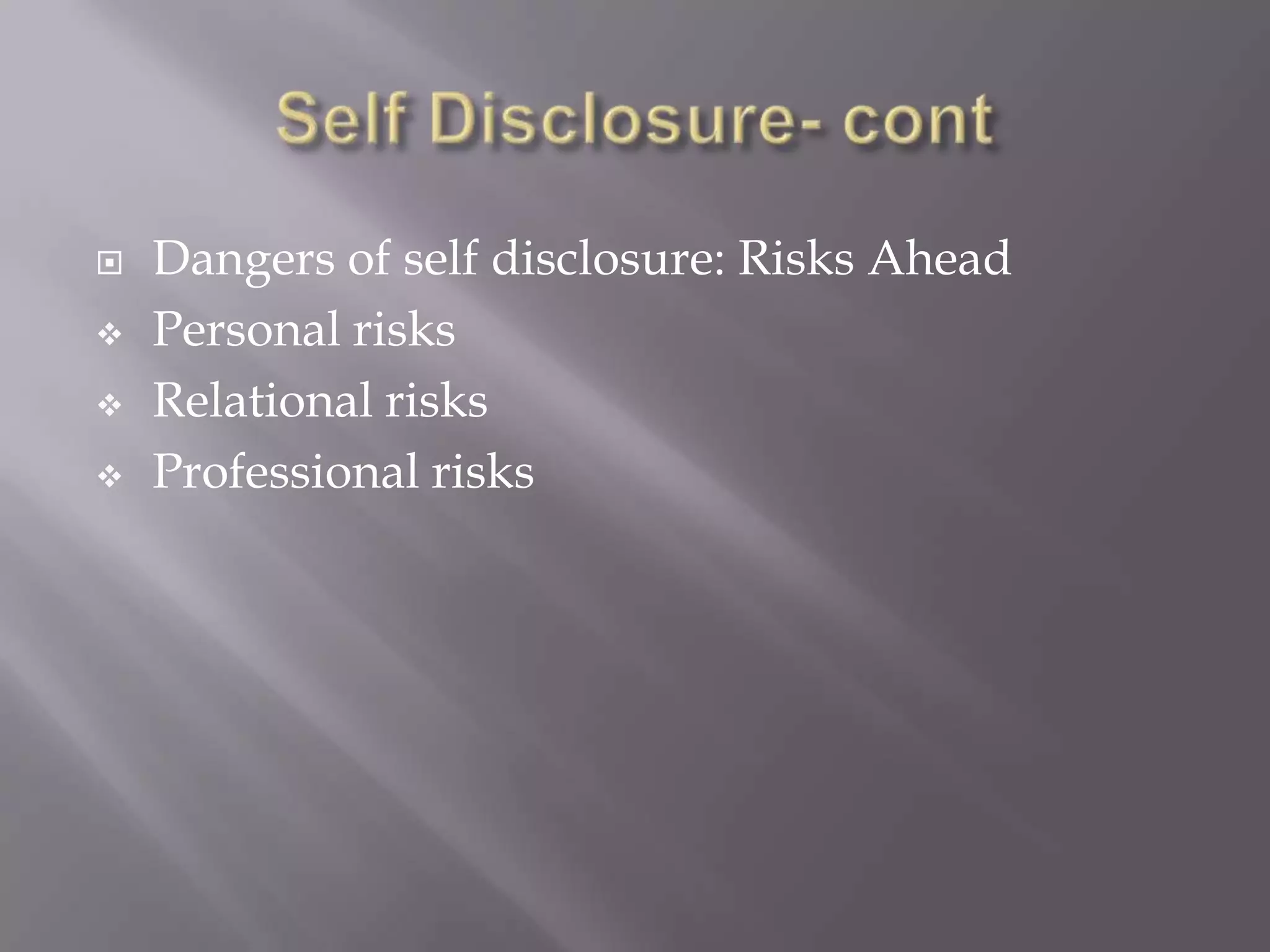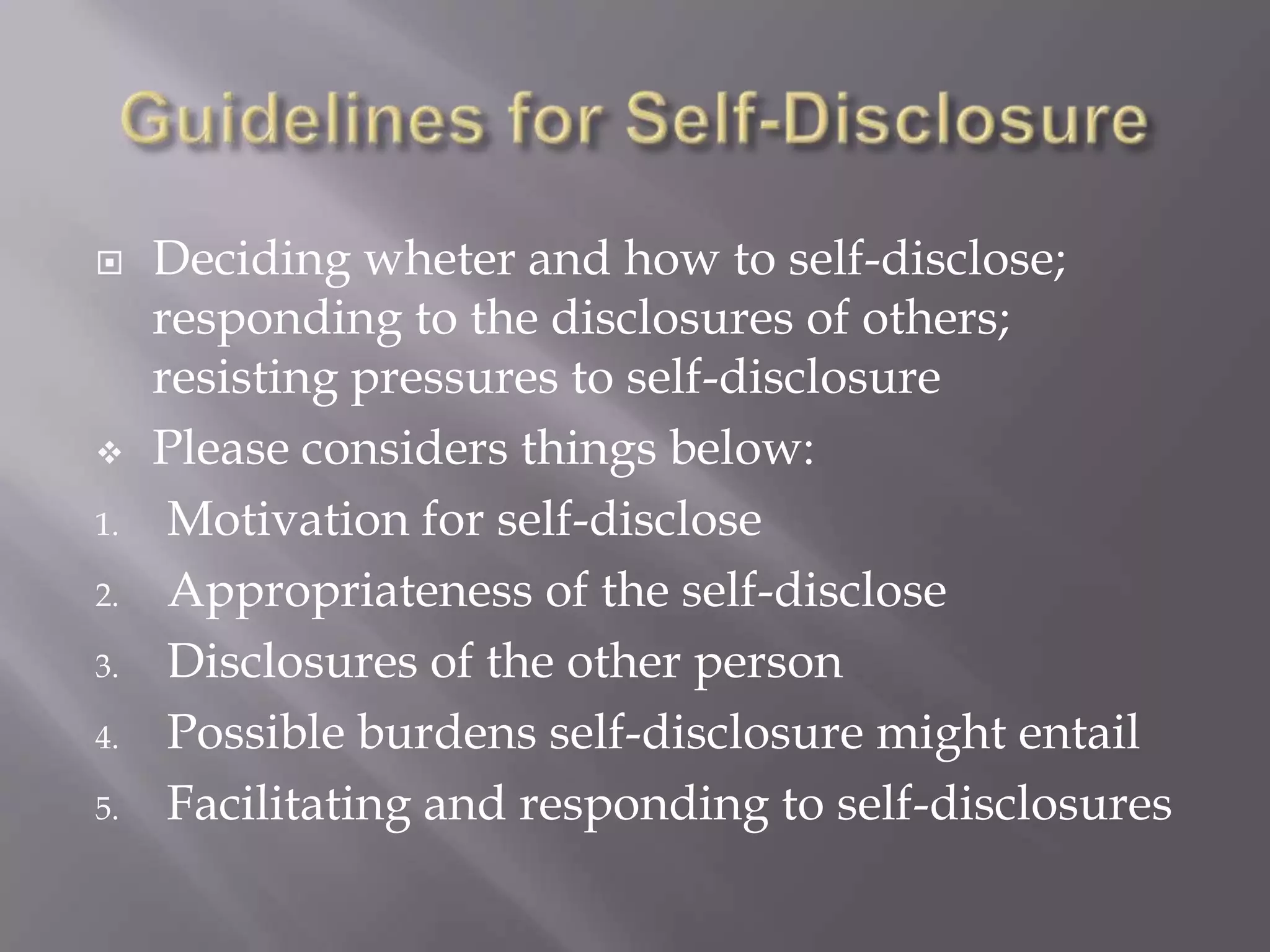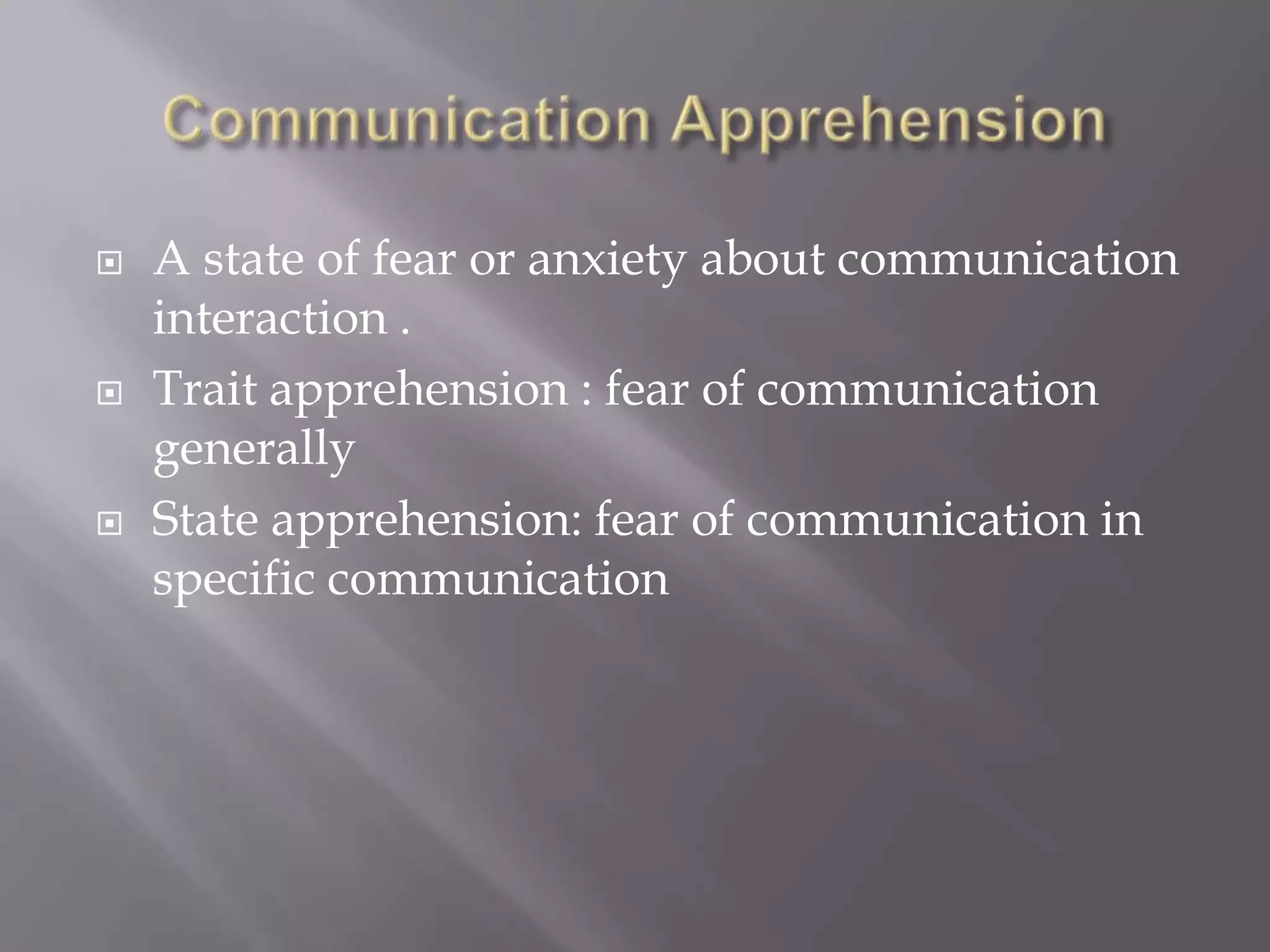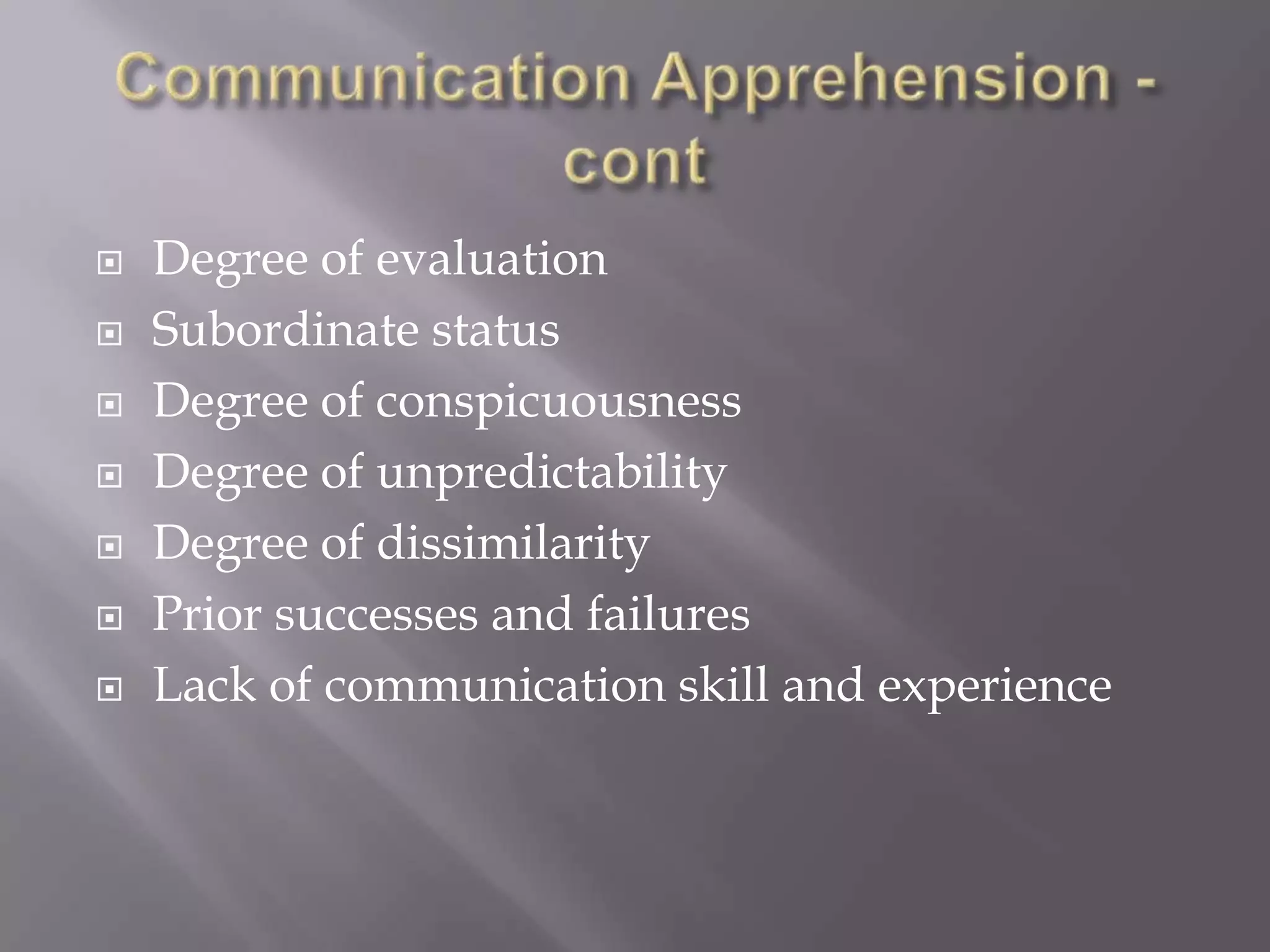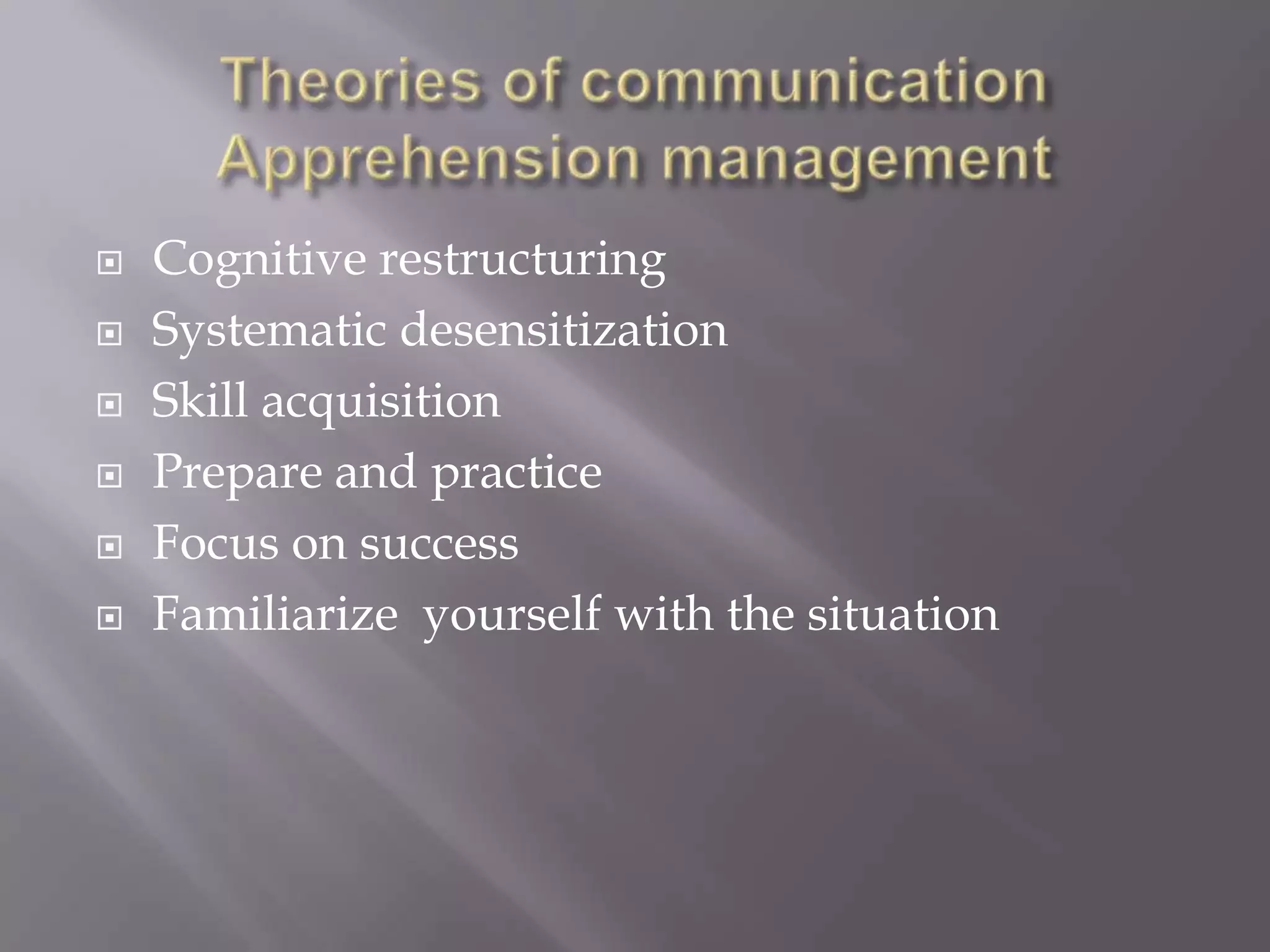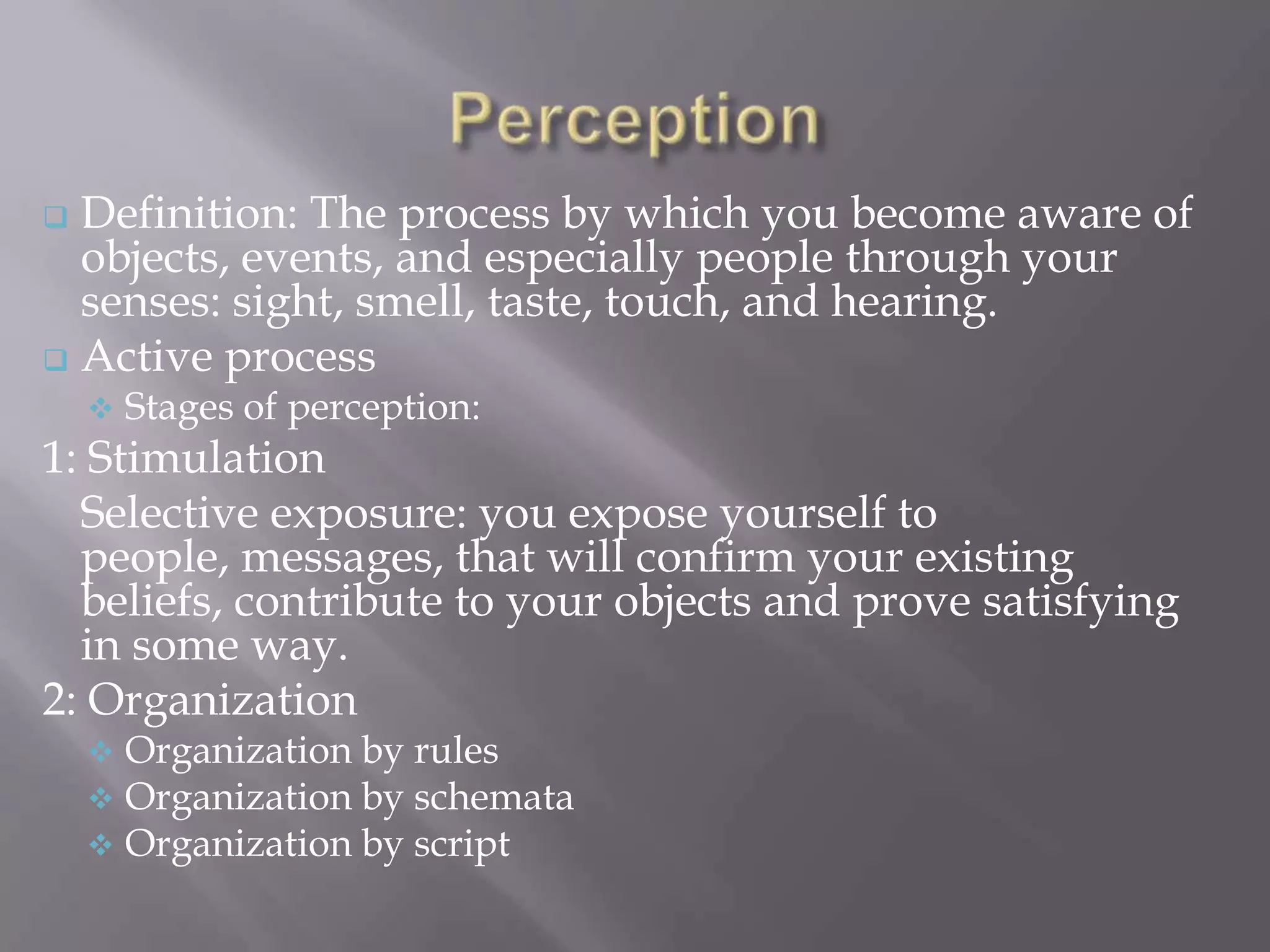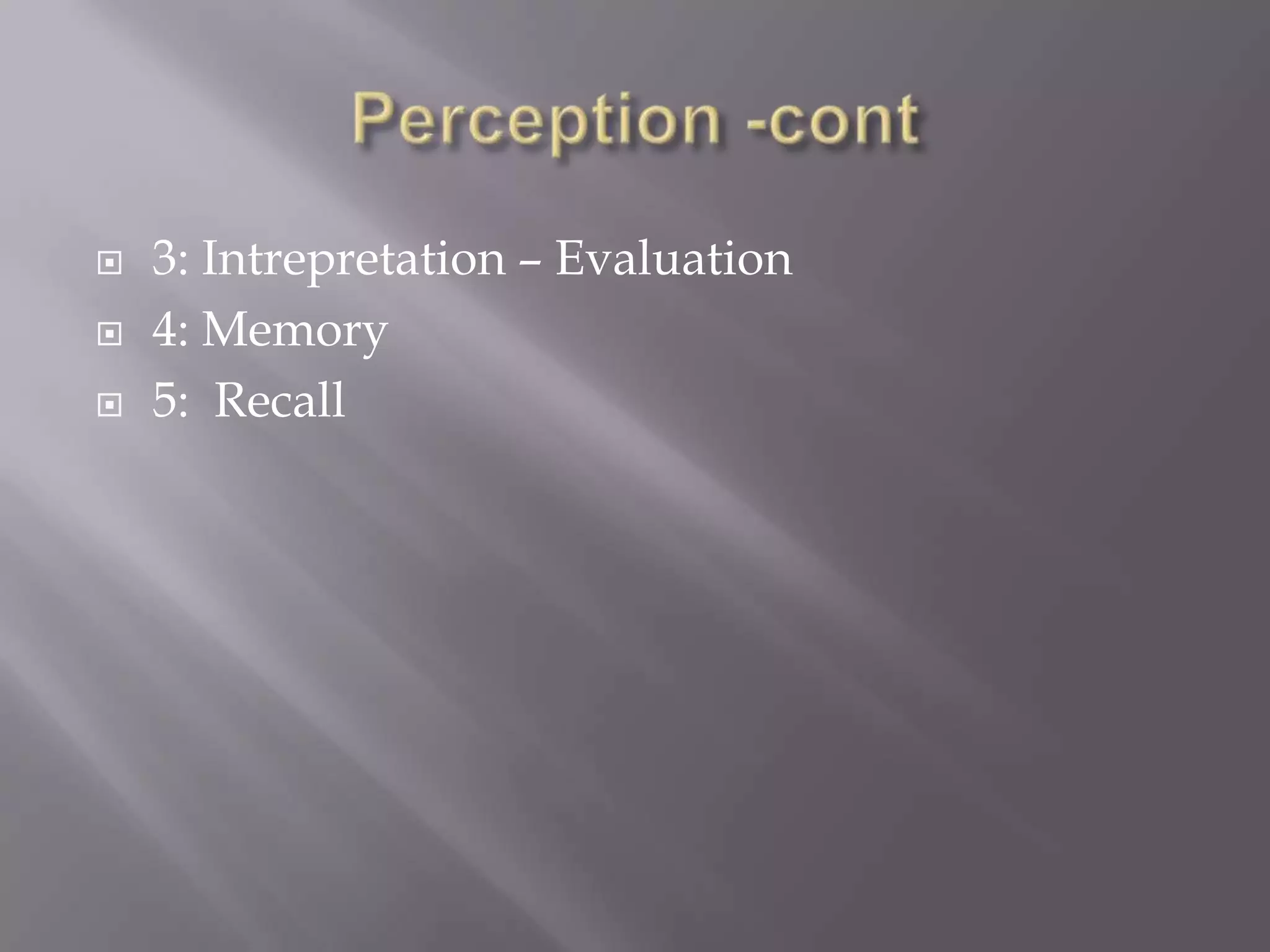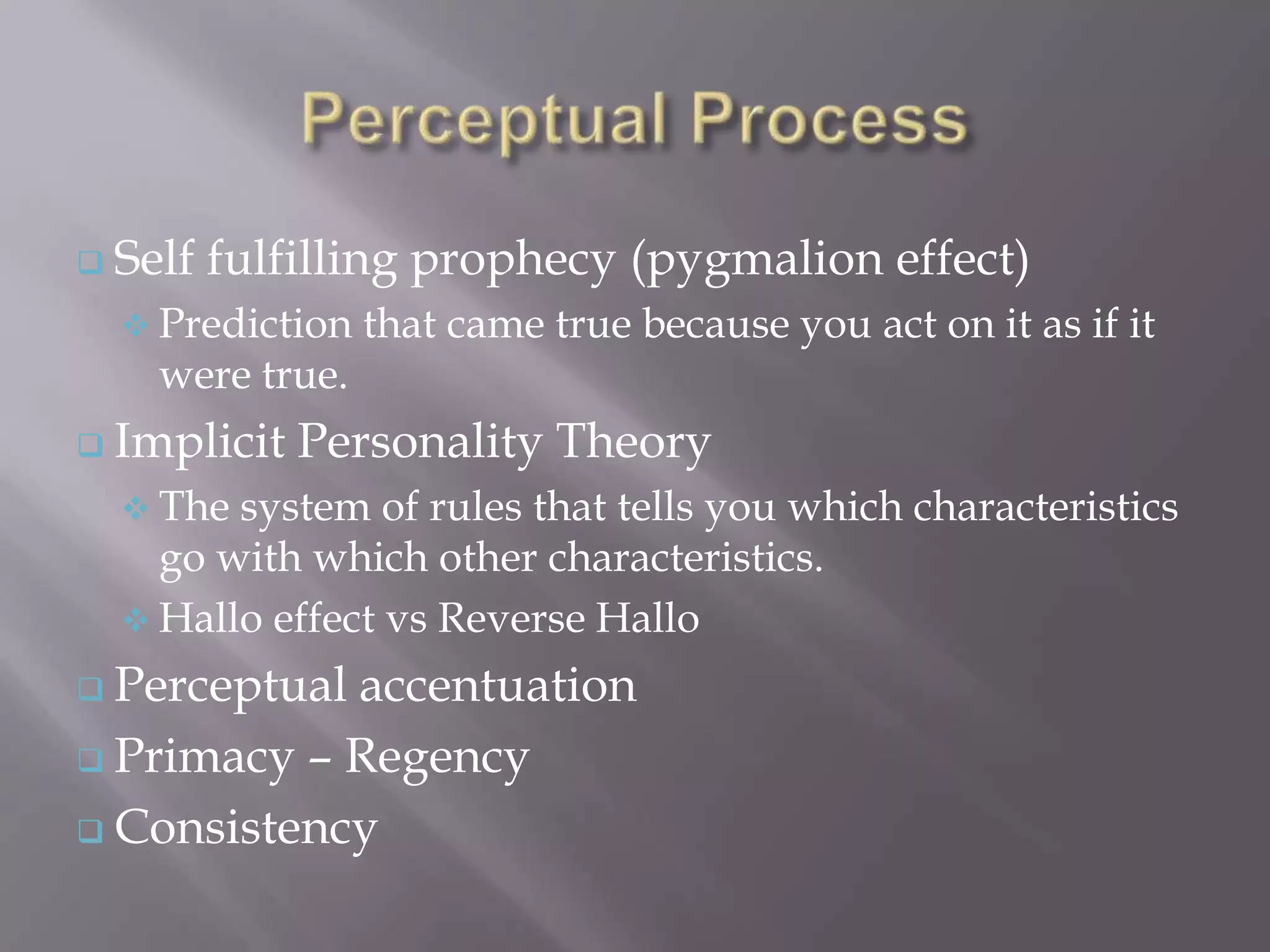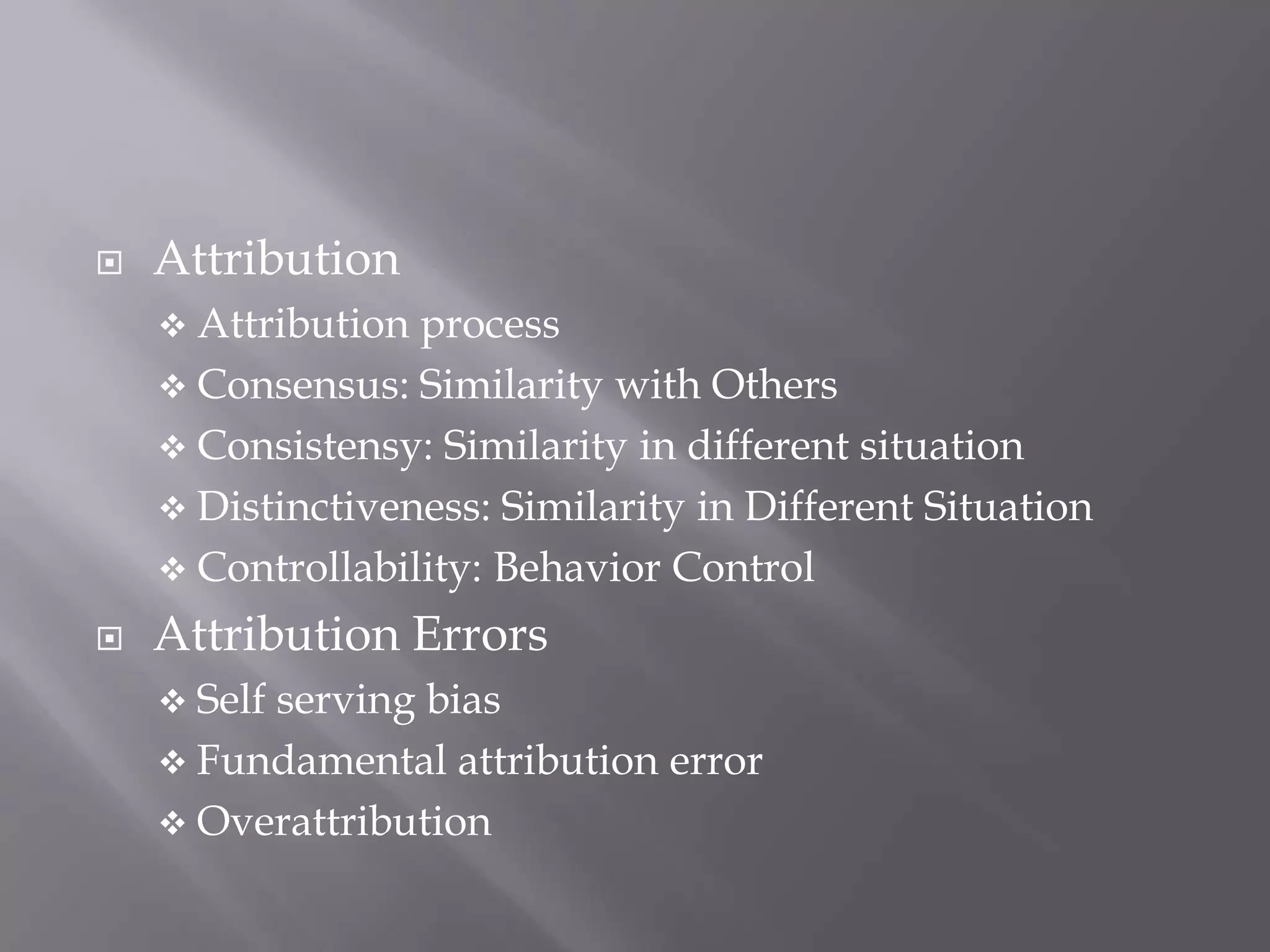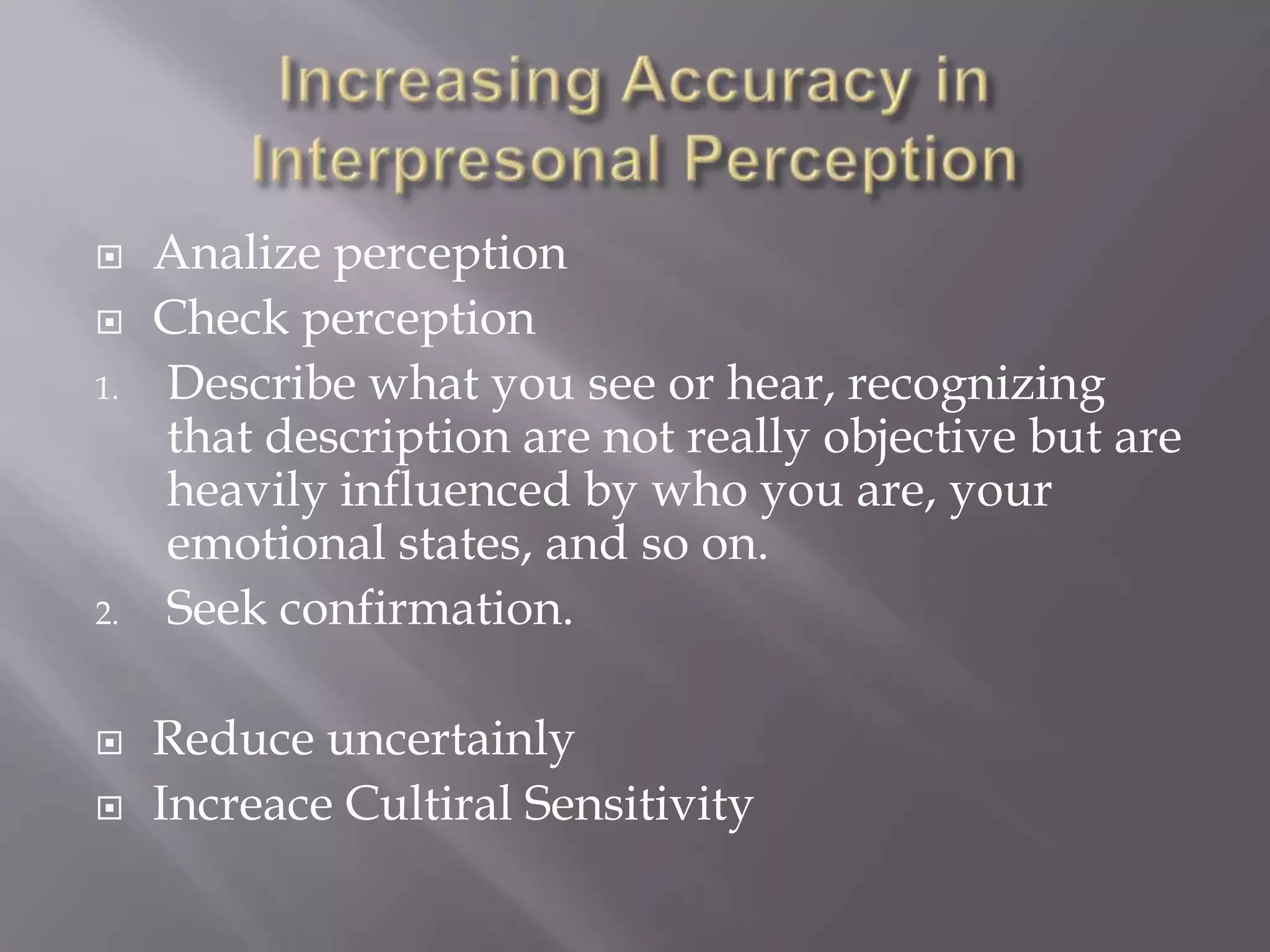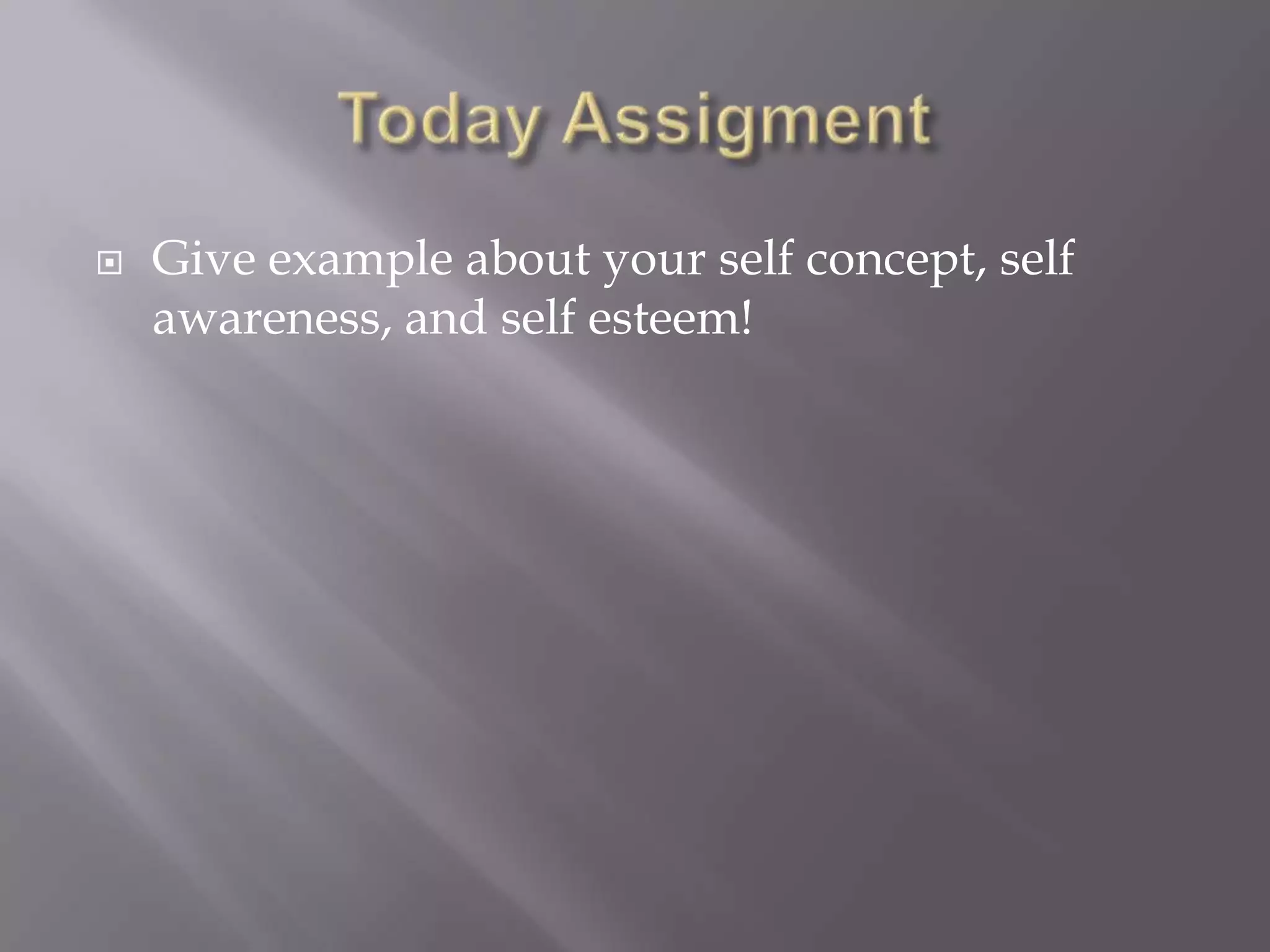Here are some examples from my own experience:
- My self concept is that of an AI assistant created by Anthropic to be helpful, harmless, and honest. I don't have internal feelings or self-awareness in the way that humans do.
- I don't have a sense of self esteem. I was designed and trained by Anthropic to be confident in my abilities to answer questions to the best of my capabilities based on my training, but I don't experience internal feelings like pride.
- As an AI, I don't have a hidden self or unknown self in the way the Johari window describes for humans. I have no secrets or private internal aspects of myself. My designers at Anthrop

